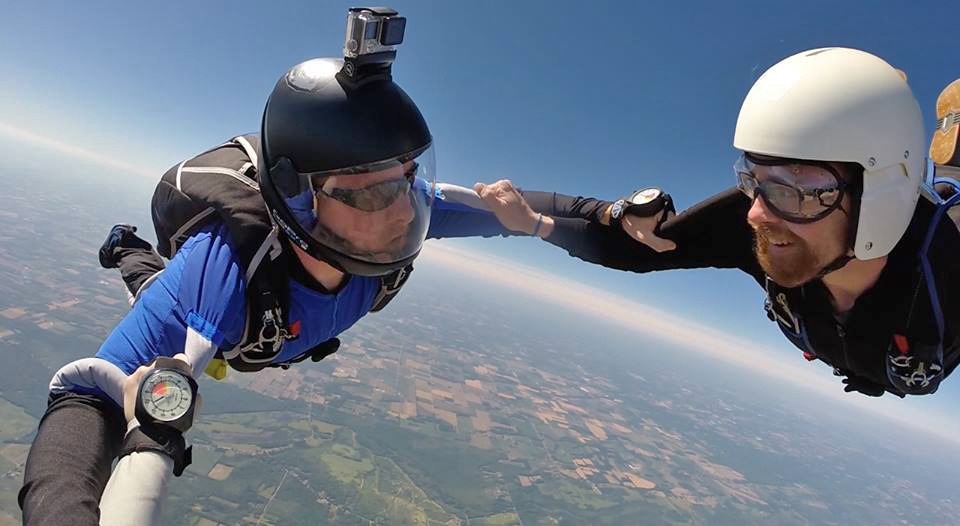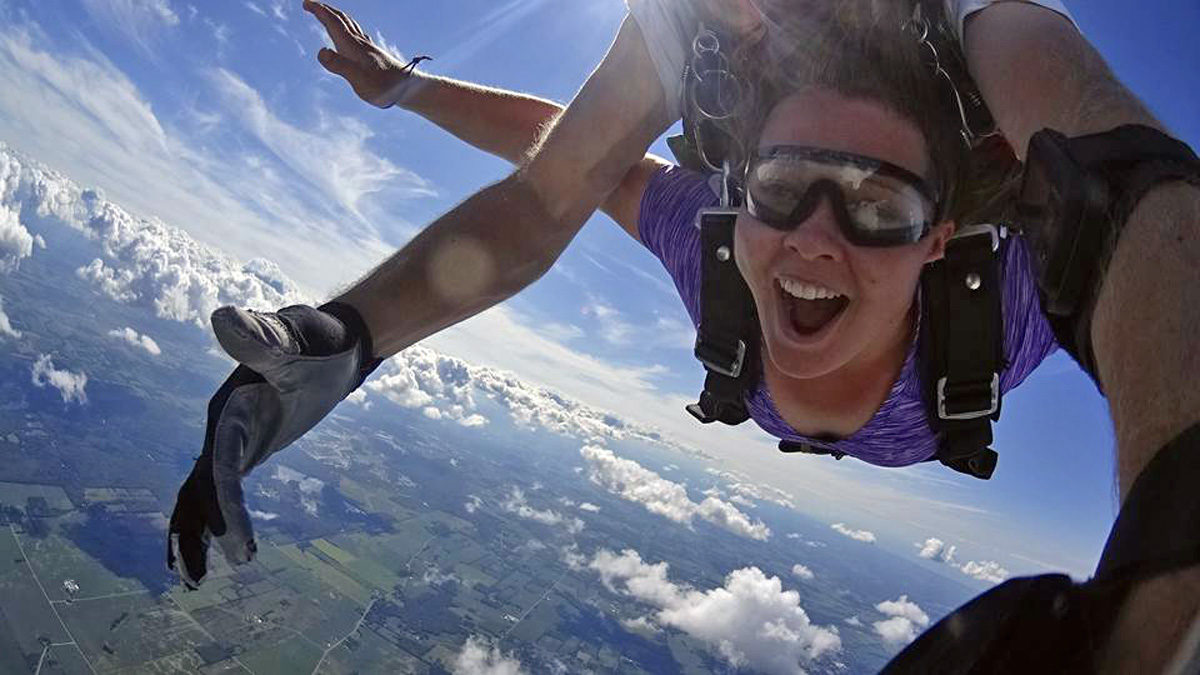Skydiving evokes images of adrenaline junkies, speed demons, and heroes of the heavens pushing the limits of the human body. One of the last things that comes to mind when people think of jumping out of an airplane is physics.
But the truth of the matter is, science plays a huge role in skydiving! Understanding the physics of falling is an important part of learning how to skydive. And one of the most relevant gravity-related topics is the terminal velocity of the human body.
The constant velocity of a skydiver is determined by many different factors. That’s where science comes in. Knowing how to estimate each person’s fall rate helps skydivers execute group jumps safely. Because everyone falls at a different speed, skydiving requires a bit of planning.
But no matter how fast you’re falling, all skydiving is technically terminal velocity skydiving! Let’s learn a little more about what that buzzword means and how it applies to jumping out of an airplane.

The Science Behind Terminal Velocity
Terminal velocity is defined as the maximum velocity attainable by an object as it falls through a fluid. And that value is determined by a formula that includes the mass, density, surface area, and drag forces of the falling object. And, the force of gravity, of course!
Contrary to what people think, no two objects have the same terminal velocity. It’s only in a vacuum that all freefall speed is created equal because the influence of a fluid (in this case, air) is eliminated. In the real world, all of these factors have a very real impact on how fast something falls.
That means that if two people of equal size and mass are going skydiving, the one who is wearing baggier clothing will fall slower than the one with a more fitted outfit. On the flip side, if all drag were equal, the person with a higher mass will fall faster than the person with less.
And of course, not every comparison is that straightforward. Unique combinations of all of these factors come into play when figuring out each human’s terminal velocity. Someone’s terminal velocity can even change from jump to jump depending on what they wear and how they fly!
So, with all that science in mind, what is the terminal velocity of a skydiver?
Do You Hit Terminal Velocity While Skydiving?
Short answer: yes! Many people think that the terminal velocity associated with skydiving is 120 mph. But that’s not the fastest a skydiver can go. Beyond the size of the skydiver’s body and the outfit they choose to wear on their jump, the configuration they’re flying in can also impact how fast they fall.
Flying in the default belly-to-earth arch position is the slowest way to move through the air and is the basis for that 120 mph speed estimate. But some skydivers choose to fly in a vertical configuration that greatly reduces the surface area and drag of their body. This technique is called freeflying, and skydivers who are flying head up or head down can reach speeds of over 200 mph!
Fun fact: the current record for the fastest speed on a skydive is 329.18mph, achieved by Marco Hepp in October of 2022!
Okay then, how long does it take to fall 10,000 feet? As you can see, that’s not the simplest question. The most straightforward answer is the average, which is about a minute. But all of the different choices made on a jump can make that number longer or shorter. For instance, wingsuiters can get multiple minutes of freefall because of all the drag equation and lift their suits produce!

What Happens When the Parachute Opens?
Well, drag happens! The difference in speed before and after the parachute opens is the best demonstration of how air resistance affects terminal velocity.
Pre-deployment, a skydiver has nothing to worry about but the surface area and drag of their own body. They are traveling at the terminal velocity relevant to their individual composition and position in the sky.
But there’s a whole new piece of the puzzle to consider after the parachute opens. Suddenly there is anywhere from 60 to 350 feet of nylon drag to add to the equation. And not only that but the parachute is also designed to generate lift!
The terminal velocity of a skydiver in freefall is very different from the terminal velocity of a skydiver under a parachute. But both are still technically the terminal velocity for that specific situation!
As you can see, skydiving involves many different terminal velocities. And the best part? All of them are fun! Come find out your top speed! Blue skies!





